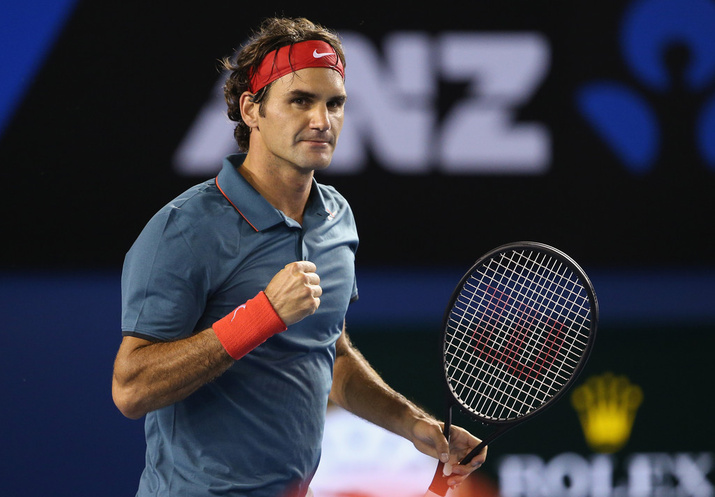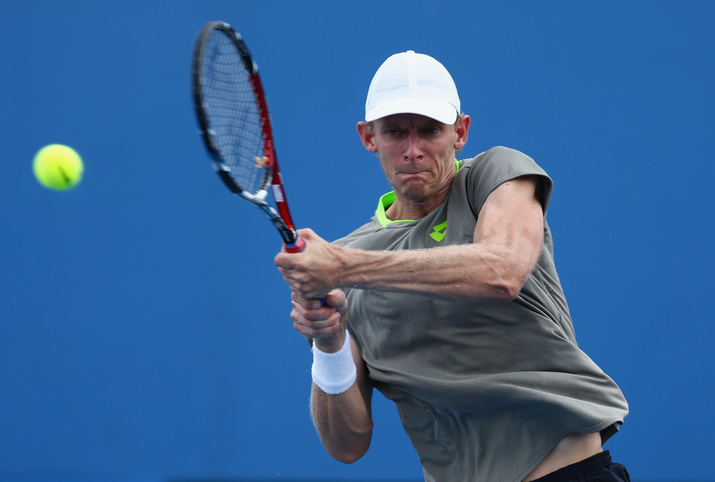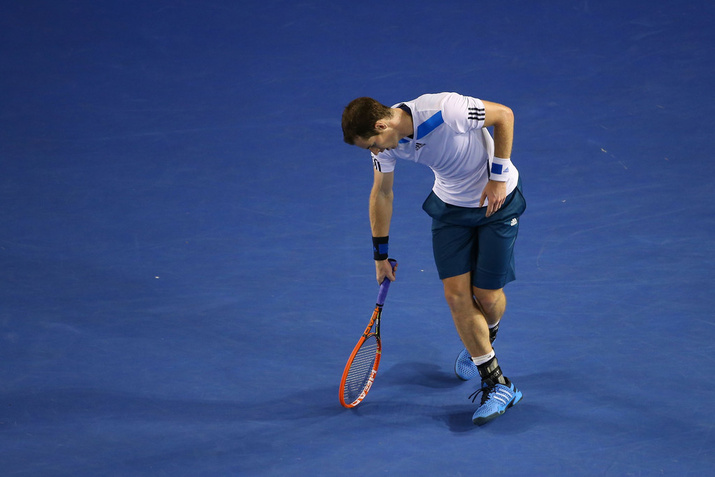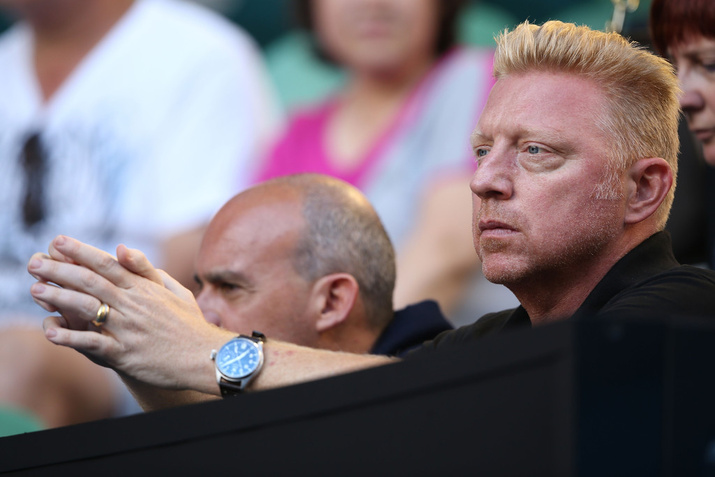Don't miss any stories → Follow Tennis View
FollowStuds and Duds: The Best and Worst in Tennis This Week
The second marquee event of 2014 looms just a few days ahead at the BNP Paribas Open in Indian Wells, California. But its presence did not stop several of the top men from competing in Dubai and Acapulco this week. Several intriguing trends emerged from those tournaments that may play a role at the WTA Premier Mandatory and ATP Masters 1000 showcases in March.

Studs:
Federers, large and small: Reinvigorated in 2014 after a dismal 2013 campaign, Roger Federer notched his second victory over a marquee rival this year. Federer rallied from losing the first set to Novak Djokovic for the first time, producing a clinic of controlled aggression against the world No. 2. Their clash came in a semifinal but felt like the virtual final, which the Swiss star won a day later to claim his sixth title in Dubai. No tournament except Wimbledon has seen Federer lift its trophy more often. He will travel to Indian Wells, which he won just two years ago, in an ideal frame of mind to confront the challenges of a Masters 1000 tournament. And the Big Four is a four-wheel-drive juggernaut again after Federer’s victories over Djokovic and Andy Murray early this year. He has defeated his last six top-10 opponents not named Rafael Nadal.
What impressed the most from Grigor Dimitrov this week was not his second career title but whom he defeated and how he defeated them. A duel with Ernests Gulbis saw Dimitrov rally from within three points of a straight-sets defeat. That match might have been the first edition of a significant ATP rivalry if both men continue their upward trends. Dimitrov then bounced back from that marathon just a day later to score another comeback, rallying to upset Andy Murray for his second win over the Big Four. Struggling to finish off both matches, Dimitrov has not yet honed the killer instinct of a champion. But he shrugged off his wasted opportunities with much more poise than he had just a year ago. Coach Roger Rasheed also deserves credit for Dimitrov’s improved fitness, which allowed him to win three three-setters in three days while spending eight and a half hours on court.
WTA Acapulco finalists: Few were the observers, surely, who foresaw Christina McHale’s debut appearance in a WTA final this week. After a promising start to her career, the American counterpuncher had regressed just when she should have broken through. Mononucleosis and several painful three-set disappointments may have turned McHale into a sturdier competitor than before. She advanced to the Acapulco final the hard way, battling through consecutive epics against third seed Kaia Kanepi and explosive French talent Caroline Garcia, to whom she lost the first set. Withstanding the nerves in her first final, McHale kept a top-15 opponent on court for three hours before yielding.
Less unexpected but equally welcome, Dominika Cibulkova’s title run in Acapulco as the top seed suggested that she can shoulder the burden of expectations as a Grand Slam finalist. The Australian Open runner-up faced no superstars in this modest draw, so one shouldn’t overstate her achievement. Still, Cibulkova has struggled before with the task of extending momentum. This week in Acapulco hinted that she might yet improve in that area.

ATP runners-up: What would you do after losing an excruciating epic of a three-hour final? Most of us—and many players—would need several days to brood over the disappointment before erasing it from our minds. By contrast, Kevin Anderson bounced back immediately after losing a grueling Delray Beach battle with Marin Cilic to reach finals in consecutive weeks for the first time in his career. He did not give an inch to the recently scorching Alexandr Dolgopolov, who has flustered more familiar names before. Outside one poor service game late in the second set, Anderson delivered the impenetrable sort of performance that has carried him into the top 20. Another epic heartbreak awaited him in the final, when he led by 4-2 in the third set and fell just two points short of the title.
The ATP top 10 includes four superstars, two surprise one-time major champions, two swashbuckling Frenchmen, the quintessential clay grinder, and—Tomas Berdych. Often the forgotten man in that group, Berdych has quietly compiled the best start to a season of his career. After he ran afoul of Ivo Karlovic in his Doha opener, he has recorded a major semifinal, an ATP 500 title, and an ATP 500 final in a Dubai draw that included half of the top 10 men. A former Miami finalist and a 2013 Indian Wells semifinalist, Berdych will be a very tough out in March this year.
Brazilian finalists: Although Dubai and Acapulco claimed center stage, a pair of minor events in Brazil offered the second and third tiers of the sport a chance to shine. The WTA hosted an International tournament in Florianopolis, while the ATP followed its Rio de Janeiro event with another in Sao Paulo.
Among the rising young women who already have left a mark on this season is Garbine Muguruza, who won her first career title in January. This Spanish shot-maker nearly claimed her second title at Florianopolis, falling just short in the final against Klara Zakopalova. But Muguruza has racked up 17 victories in the last two months as she has lost no time in bouncing back from an injury hiatus. For her part, Zakopalova impressed in recording consecutive three-set victories over both of the top two Florianopolis champions, Muguruza and the 15th-ranked Carla Suarez Navarro.
In Sao Paulo, Paolo Lorenzi contested his first ATP final. The Italian clay specialist had compiled a 25-59 record at the Tour level over the previous four years, so this result came as a shock. Somewhat less surprising was the first career title of Federico Delbonis, who had held championship points at the ATP 500 event on clay in Hamburg last summer. The 23-year-old Argentine lefty had lost to players like Blaz Rola and Taro Daniel this year, however, so victories over Nicolas Almagro and Albert Montanes raised some eyebrows.
Philipp Kohlschreiber: Like Tunisian wildcard Malek Jaziri, Kohlschreiber exploited an empty section of the Dubai draw. His 300th career victory lifted the German to his first hard-court semifinal in 13 months. With the momentum from that result, Kohlschreiber has positioned himself to gain significant points at Indian Wells and Miami. He lost his first match at both events last year.

Duds:
Andy Murray: It might seem harsh to place someone in this section who came within a tiebreak of a final, especially someone five months removed from back surgery. Still, Murray was a shadow of himself as the second seed in Acapulco. The Wimbledon champion should have felt fortunate to avoid a rout by Gilles Simon (yes, you read that right) before he even reached Dimitrov, and his serve looked far too fragile to compete with his Big Four rivals. Murray’s recovery from surgery has proved more laborious than hoped. It would be very surprising to see him contend at Indian Wells or defend his Miami title.
Jo-Wilfried Tsonga: Roger Rasheed may not have been the answer for Tsonga, but so far Thierry Ascione and Nicolas Escude are not either. The world No. 10 has lost 21 of his last 24 matches against top-10 opponents, an embarrassing slump for a man who regularly challenged the elite. Far from content with that situation, Tsonga has vowed to improve in this area. But that determination makes his ongoing futility all the more surprising and concerning, considering his talent.
Top-five injuries: Hardly had Juan Martin del Potro begun to reassert himself after a right wrist injury than a left wrist injury has sidelined him. Troubled by pain in that wrist at the Australian Open, he withdrew from his first match in Dubai and will seek his second consultation at the Mayo Clinic in two months. A tennis player with two suspect wrists might as well play in handcuffs, so doubts have started to shroud del Potro’s future as a contender.
Less ominous but still worth noting is the left leg injury suffered by David Ferrer in Acapulco. Ferrer withdrew from Indian Wells and may need a few weeks to recover. He may struggle to defend his Miami runner-up points but should bounce back in time for the clay season where he thrives.
Eugenie Bouchard: Holding the second seed at Acapulco, Bouchard squandered a one-set lead in the quarterfinals against fellow young talent Caroline Garcia. Fans should beware of expecting too much too soon from the surprise Australian Open semifinalist. In the same position last year, Sloane Stephens achieved little over the next few months after her breakthrough.
Nicolas Almagro: Dropping his Rio opener to Alexandr Dolgopolov was excusable, especially when Dolgopolov upset two more top-20 opponents en route to the final. Dropping his Sao Paulo opener to journeyman Federico Delbonis was not excusable. For the second straight match, Almagro won the first set comfortably but lost the plot in the second set and faded in the third. That is a familiar story for him and one of the worst possible ways to enter a crucial stretch of the season.

Boris Becker: When a player hires a coach to instill mental fortitude and proceeds to lose two crucial matches after winning the first set, fingers will start to point at the coach. And rightly so.










